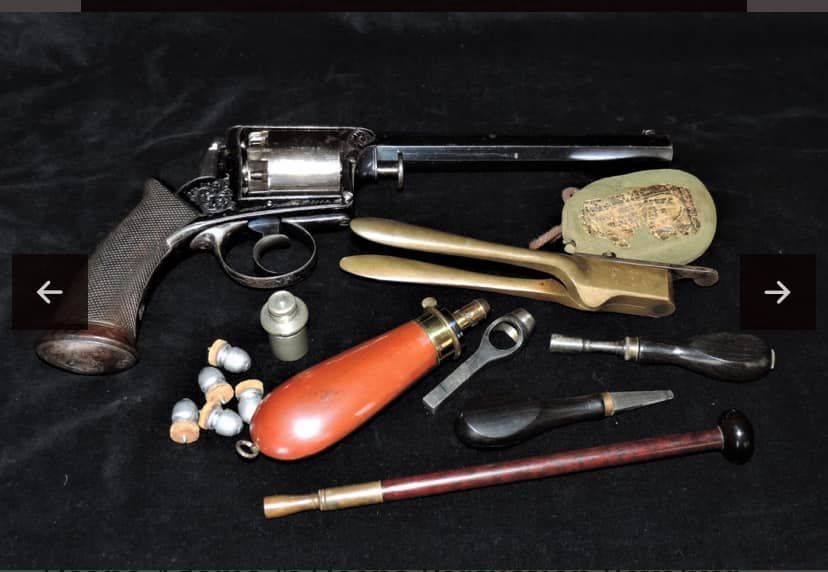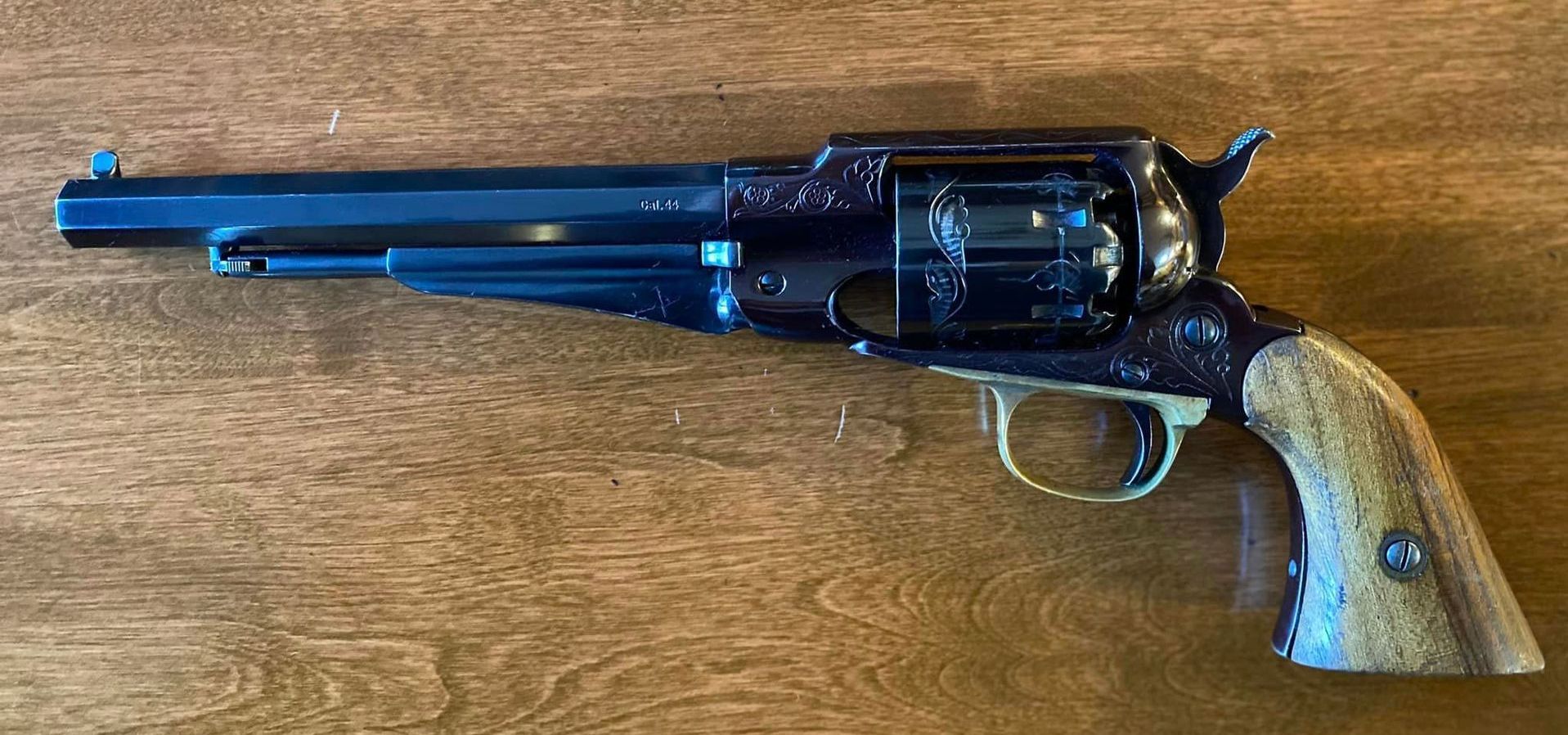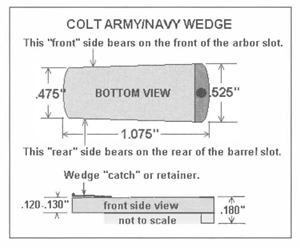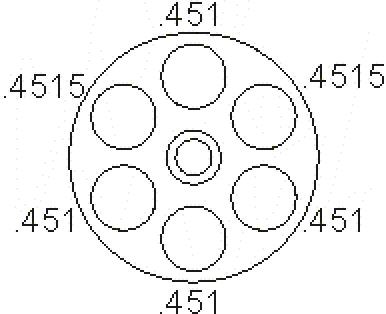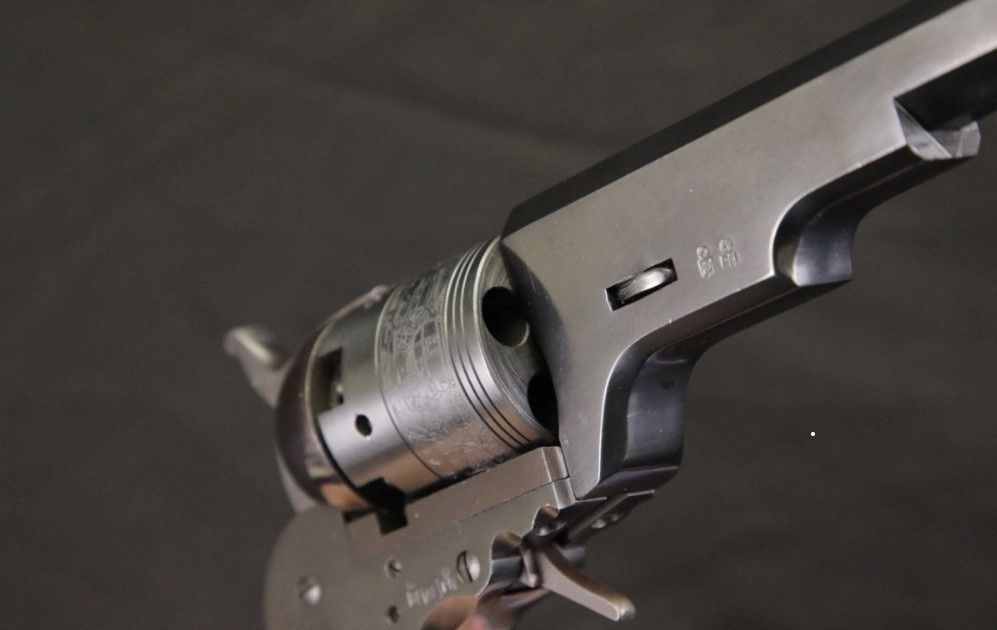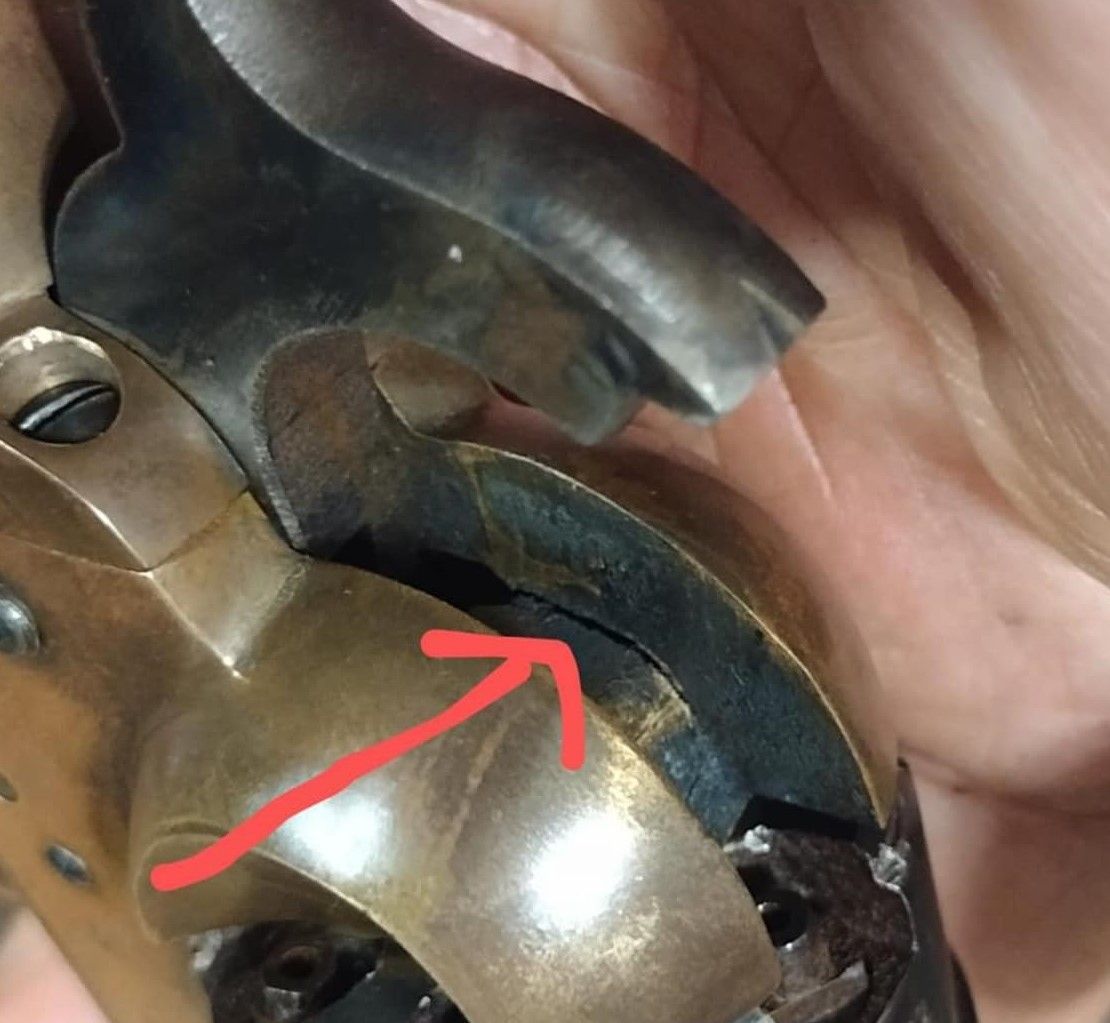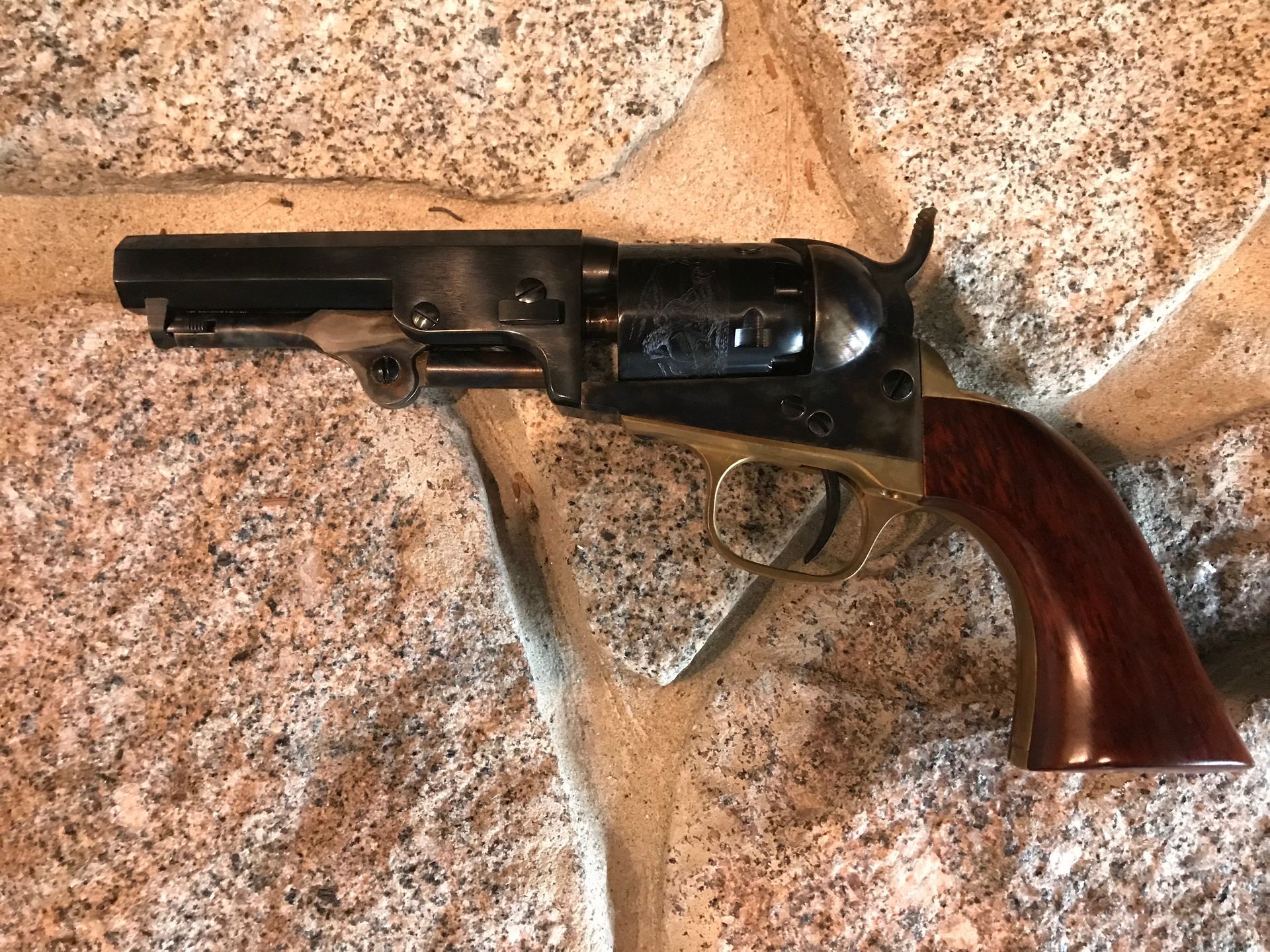Collecting the 1960 (1860) New Model Army Centaure
Collecting the 1960 (1860) Centennial Arms New Model Army Centaure
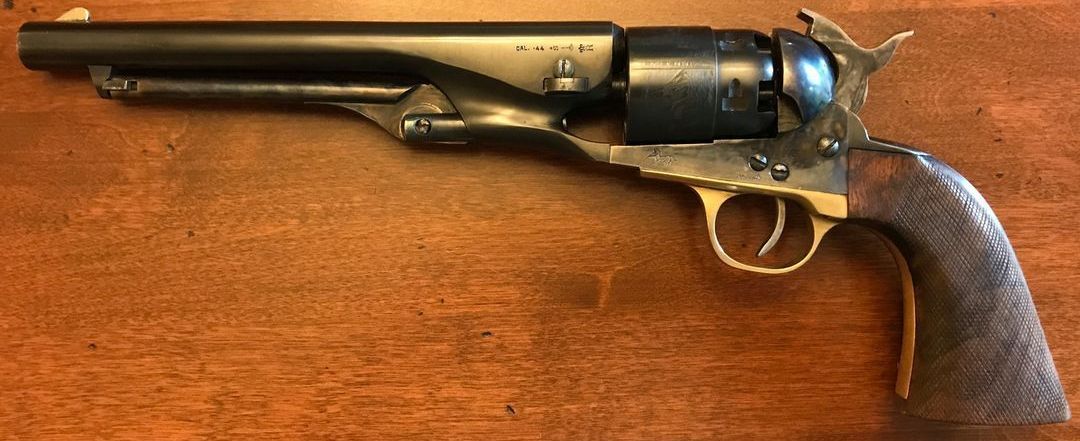
excerpt from “The Rage Over Replicas” by William Edwards
"I was called in as a consultant to Shore Galleries, an auction firm specializing in fire-arms sales, and remained with this activity when the auctioneer, Sig Shore, formed a company to deal in surplus military rifles and ammunition, and second-hand guns generally. While the original concept of MARS Equipment Corporation was to engage in buying from primary importers and resell as jobbers and dealers in the United States, the market conditions dictated an expansion of the company funds into other channels. The course of manufacturing presented itself and a series of coincidences launched the now-popular Centennial Arms Corporation line of percussion shooting replica revolvers, pistols, and pistol-carbines. The success of Val Forgett in Navy Arms, with which Shore had dealt in the auction business, led him to decide to manufacture the Model 1860 or Colt's New Model Revolving Holster Pistol-the Colt New Model Army.44.
My work on this was at first less, ultimately considerably more effort than with launching the Navy Arms project. Shore and myself on a trip to Germany passed through Liege, Belgium. There we made the acquaintance of Mr. Paul Hanquet, great grandson of one J. Hanquet who in 1852 had signed an agreement with Sam Colt authorizing him to manufacture Colt's Patent (Colt Brevete) revolvers in Liege. Associated with Mr. Paul was his cousin. Mr. Albert Hanquet, in a company the trade mark of which is "Centaure." The rampant centaur is quite clearly lifted from the cylinder engraving of one of Colt's Paterson pistols, and "Centaure" had been handgun and musket makers in Liege for generations. Shore bought a number of muskets from these people and later, upon re-turning to the United States and casting about for additional work for MARS money, hit upon the idea of having them make the copy of the Colt 1860. Other people were interested in this venture and to distinguish the military and modern firearms sales business of MARS from the new venture, a new firm was organized, appropriately titled by me, Centennial Arms Corporation."
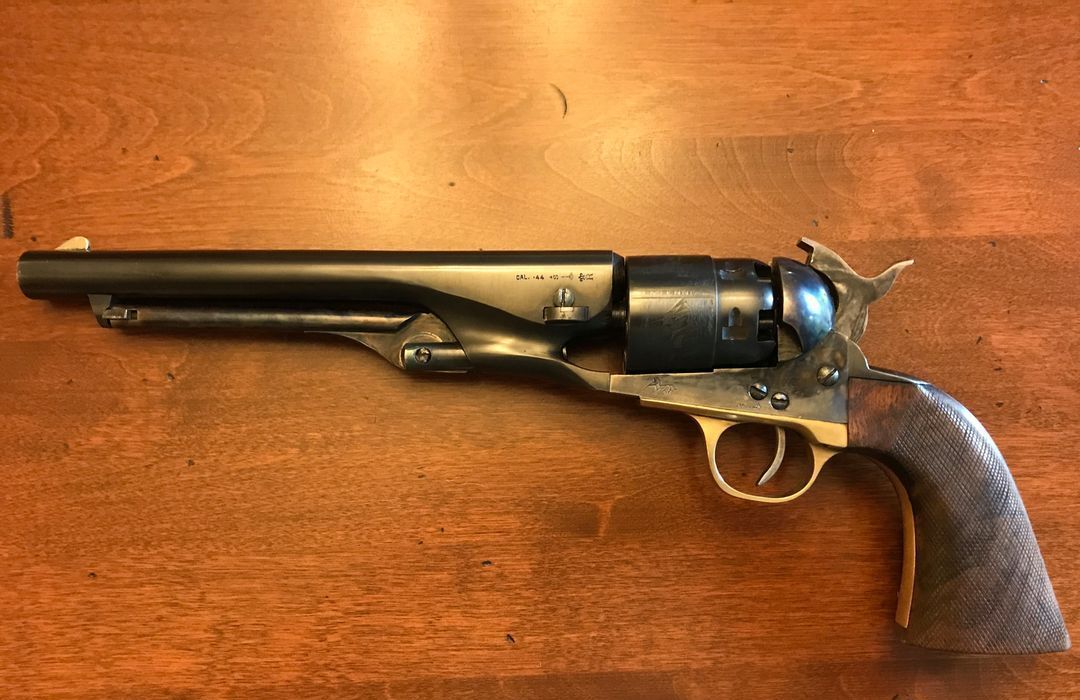
The evolution of Centennial Arms Corporation to its present position of volume producer of quality hardware was not without its "moments." The models supplied to Centaure were two: a mint parts-assembled Army 1860 that had a slightly bent trigger guard but was otherwise perfect, and a rusty but not much worn, "crisp" Army with a perfect trigger guard. The parts Army gave details for finishing, type of polishing, color of blue and such. I mistakenly assumed the contractor would recognize the scars on the guard, as if the pistol had been dropped on concrete, and take the perfect but rusty specimen as the model. Instead, as an ex-pression of the faithfulness with which he desired to execute our wishes, the guard was copied including the dent. Thousands of guards were cast up with egg-shaped bows! Fortunately, I was in Liege to inspect the first pistol made, and caused two corrections to be introduced. The guards were all swedged to the correct shape by a steel plug and secondly, the curved line on the side of the barrel was preserved, the first pistol having been polished a little "soft" along his contour. Guns were numbered from "1" up in the series which began to duplicate the regular NMA. This was the three screw frame, cut for stock and with the toe of the butt notched for stock. Cylinder belts were plain up to about `1,400; thereafter the Navy scene was regularly furnished on regular cylinders. The first gun, unnumbered, was kept by Hanquet. The second gun stamped MODEL was given to the present president of Colt’s. It was engraved by me on the barrel, ADDRESS FRED ROFF, HARTFORD, CT.
As a variation, after about 500 of the regular NMA had been received by Centennial Arms, the so-called "'Civilian Model" was made available. This has a round frame not cut for stock, no notch in toe of butt, and the straps are silver plated. Serial numbers in this series, unlike the Colts in which they are concurrent with all other variations, run also from "1" up but pre-fixed by a letter to indicate the series; thus: "C1, C2, C3 ." Both these pistols have 8-inch barrels, rather shallow regular rifling constant twist and slow, and bear the barrel stamping 1960 NEW MODEL ARMY. The civilian cylinder bears a Navy scene engraving like the Colt but with less background detail. About 500 of these guns were made with the legend ENGAGED 16TH MAY 1843 as a part of the engraving but this was re-moved at the suggestion of the Ohio Gun Collectors Association board of directors to inhibit possible use of these cylinders in fakery. Actually, there are so many detail differences in the fabrication of these guns that only the most unsophisticated collector with larceny in his heart need fear getting taken by one of the Centennial pistols as an original. The boring and rifling, for example, are adapted to the .451 round ball using the Lyman mould. For the regular Colts, Lyman offers the .457 round ball, a considerable difference in bore size.
In the spring of 1961 the first Fluted Stocked Army was turned out. As a pattern, Centaure was furnished with a rough-condition genuine 1st Model 1860 Army, 7 1/2-inch barrel, full-fluted cylinder, four screw frame cut for stock. The first pistol completed was F9 (a prefix and numbering from 1 up being the rule also,)and it was delivered to me at a dead run by Roger Vryens of the Centaure firm as I waited for the train up to the airport to return to the United States in June, 1961. The backstrap had been polished and not yet blued after final fitting; I subsequently blued it in my gas stove and sold the pistol and stock at an Ohio show.
Among efforts to improve the basic form of the pistol, Centaure electro-brazed the loading lever lug to the barrel. This produced a problem which was not solved for some time. It was noticed that slight spotty rust would form about 2 inches from the muzzle, marring the otherwise brilliantly burnished swedged rifling. Repeated attempts were made to solve the cause of this, including instructions to the proof house about oiling after cleaning. Still, light rust persisted. Then I noticed in a rack of barrels not yet sent to the proof house, the same kind of rust! When this was called to the attention of the works manager he explained that to keep the heat from spoiling the bore, the workman sticks a piece of raw potato in the muzzle while brazing the lug. My only instructions were "No more raw potatoes!"
As usual with the Liege fabricants, even the larger ones, work is done here and there and then put together. Consequently the barrels are forged and drilled, rifled and turned outside, and supplied to the machine shop for further finishing. Frames are machined from a solid forging; cylinders lathed from stock. The back-strap, one piece in the Colt, is constructed in three pieces, at lower cost by avoiding use of special machinery. The top is one part, welded to the back strap, and the butt strap is then jig-welded in turn. In the event of a rare presentation engraving from Colonel Colt to General Smorgasbord appearing on a suspect back-strap, X-Ray will easily reveal the two welds and the fraud. If, in order to successfully fake up one of the Centennial arms it is necessary to attach genuine Colt parts, it is easy to see that the advent of the Centennial reproductions has added nothing to the faker's basket of tricks that wasn't in the junk pile already.
Reference:
Civil War Guns by William B. Edwards, Chapter 35
